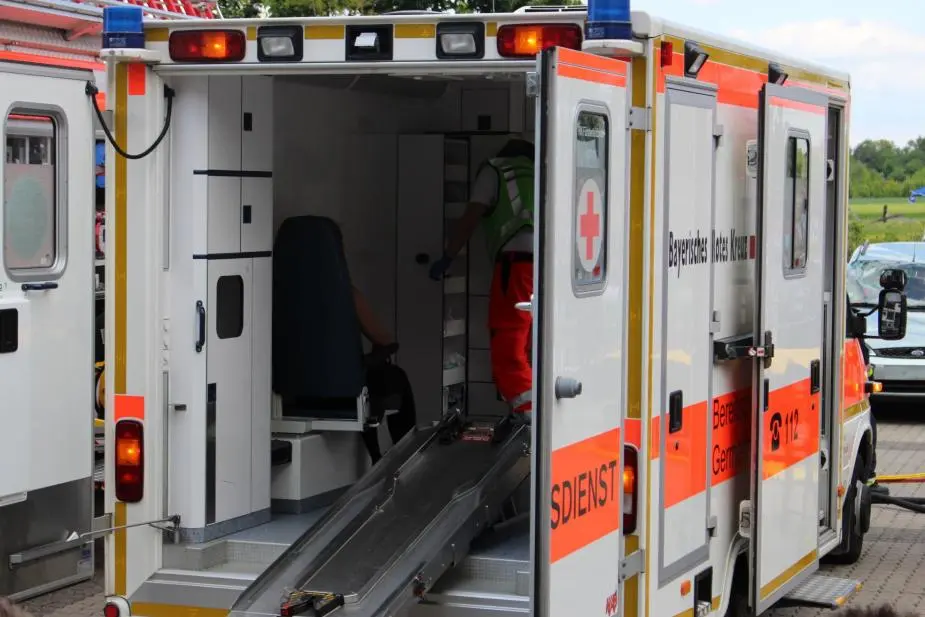- hisolar@cnhisolar.com
- +86-13905874507

The inverter on an ambulance is a critical electrical device with several important functions:
Power conversion: The primary role of the inverter is to convert the direct current (DC) from the ambulance’s battery to alternating current (AC). This is essential because many medical devices and tools require AC power to operate.
Powering medical equipment: The ambulance is equipped with various life support and medical monitoring devices, such as electrocardiogram (ECG) machines, ventilators, infusion pumps, etc. These devices typically need a stable AC power supply, and the inverter ensures they can function properly during patient transport.
Power management: The inverter also helps manage the power demands on the ambulance, ensuring the battery does not deplete too quickly from excessive use. This is crucial for long-distance rescues or in situations where external power sources are unavailable.
Emergency lighting and equipment operation: Besides medical devices, the ambulance’s lighting systems, communication equipment, and other electronic devices may also rely on the inverter for power.
Voltage regulation: High-quality inverters can provide voltage regulation, protecting sensitive medical equipment from voltage fluctuations and ensuring patient safety.
Backup power source: In some cases, if the main power supply encounters issues, the inverter can serve as a backup power source, ensuring critical equipment continues to operate until the ambulance reaches a hospital.
Inverters are very important on ambulances, not only ensuring the normal operation of medical equipment, but also providing the necessary power management and protection to support the power needs of the ambulance when performing tasks.
The size of the inverter used in an ambulance depends on several factors, including the power requirements of the equipment in the ambulance, the number of devices running in parallel and the extra power requirements set aside. Here are some key considerations:
Total equipment power: First, the total power requirement of all equipment on the ambulance that needs to be powered by the inverter should be calculated. Including medical equipment (such as electrocardiograph, ventilator), lighting equipment, communication equipment, etc.
Additional power buffer: It is generally recommended that the inverter power rating is 25% to 50% higher than the actual total equipment power. This ensures that the instantaneous power peaks that may occur when the equipment is started do not exceed the maximum capacity of the inverter.
Leave room for growth: Considering possible additions of equipment or higher power needs in the future, it is wise to choose an inverter with some room for growth.
Efficiency and reliability: It is equally important to choose an inverter with high efficiency and reliability to ensure stable power supply and reduce failure rate.
For example, if the total power requirement of the equipment on the ambulance is approximately 2,000 watts, then it would be more appropriate to choose a 2,500 to 3,000 watt inverter. This provides an adequate power buffer while also taking into account the instantaneous power requirements when the device is starting up and possible future expansion needs.
Avoid using flammable and explosive substances: It is extremely dangerous to use flammable and explosive substances near the inverter because the inverter generates heat when running. Ambulances often carry oxygen tanks and other medical supplies, which may cause serious safety incidents if exposed to high temperatures or near fire. Therefore, it is crucial to keep the environment around the inverter clean and safe.
Ensure good ventilation: Inverters generate heat as they convert electrical energy. If ventilation is poor, the inverter may overheat, reducing efficiency or even damaging the equipment. Therefore, the inverter should be installed in a well-ventilated location to ensure heat dissipation and prevent overheating.
Proper installation location: The inverter should be installed in a location within the ambulance that is both safe and easily accessible. This usually means it should be located away from the main areas of activity for patients and medical staff, while still being easily accessible for maintenance and monitoring.
Prevent contact with water: Contact between the inverter and water may cause circuit short circuit, equipment damage or even electric shock. Therefore, it is very important to ensure that the inverter is kept away from possible sources of water, especially when cleaning ambulances or handling liquid medical waste.
Regular inspections and tests: Regular inspection of the inverter’s functionality and connections is essential to ensure it operates safely and efficiently. This includes checking that electrical connections are secure, equipment showing signs of damage or overheating, and testing that the inverter’s output is stable.
Operator training: Ambulance staff should receive training on how to safely use and maintain the inverter. Understanding the basic operation, fault diagnosis and emergency measures of the inverter is crucial to preventing accidents and improving rescue efficiency.
Avoid electromagnetic interference: Inverters may sometimes produce electromagnetic interference, which may affect other electronic equipment in the ambulance, such as wireless communication equipment and certain medical instruments. Therefore, it is crucial to select a low-interference inverter and arrange cables and equipment appropriately.
We value your privacy
We use cookies to enhance your browsing experience, serve personalised ads or content, and analyse our traffic. By clicking "Accept All", you consent to our use of cookies.